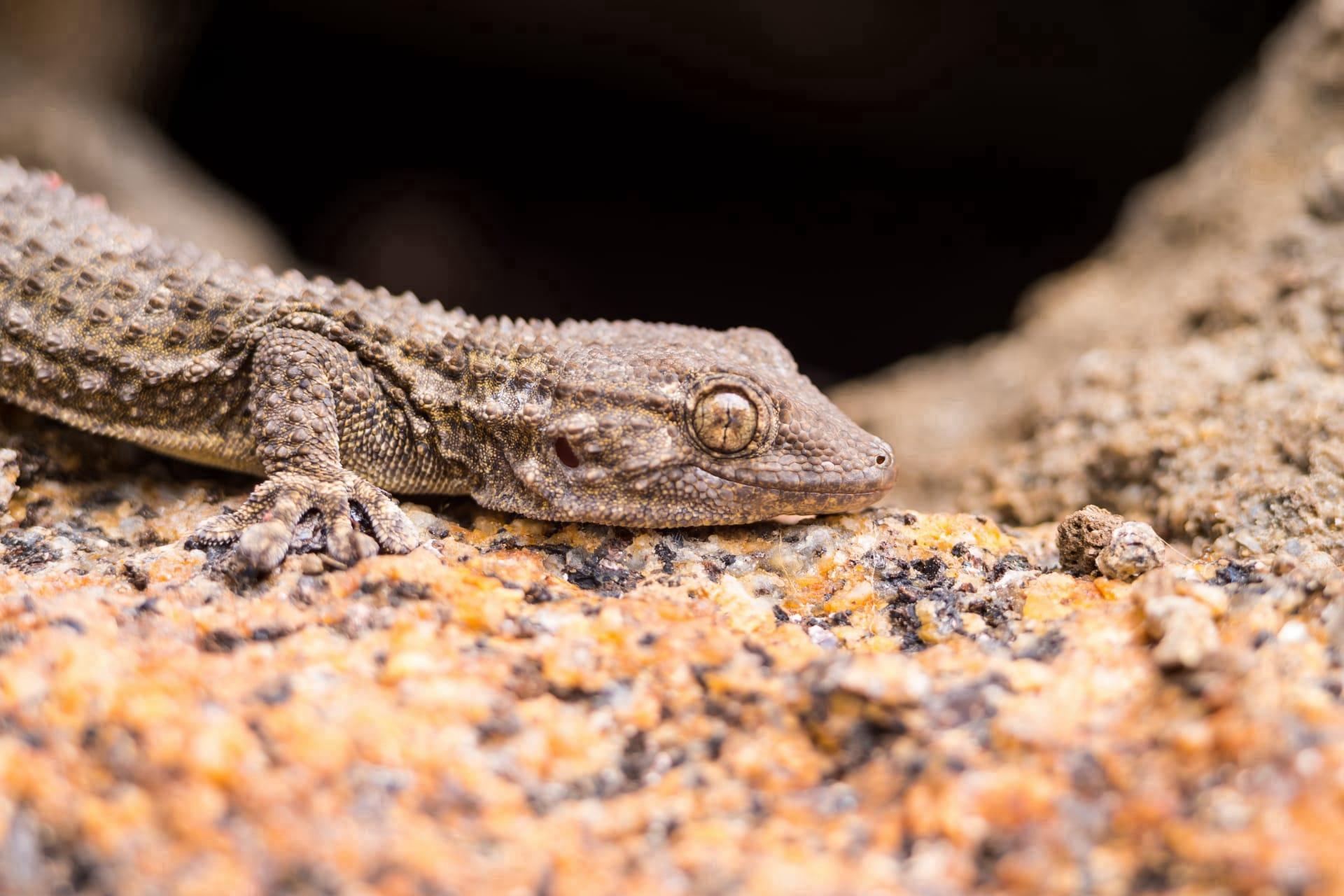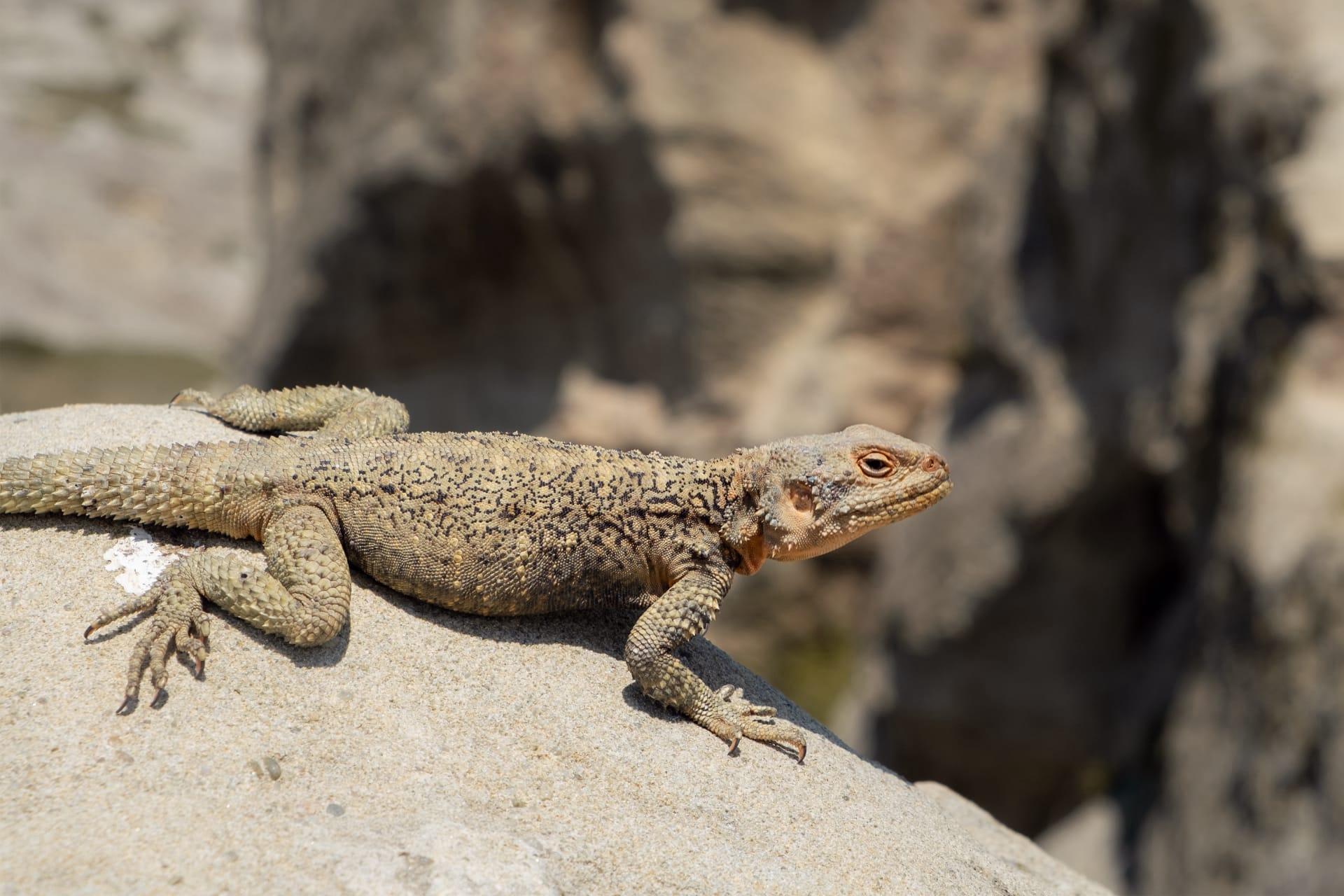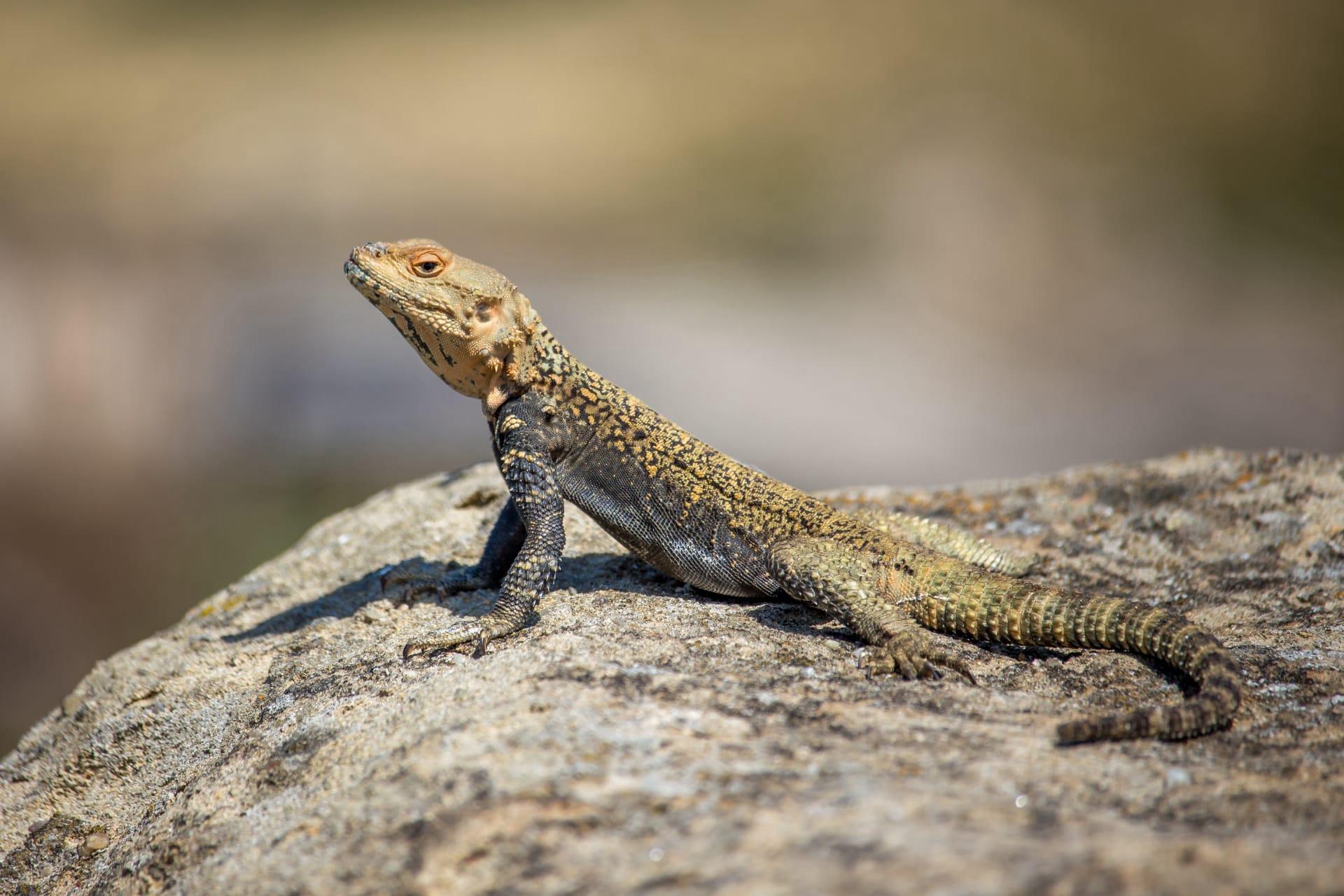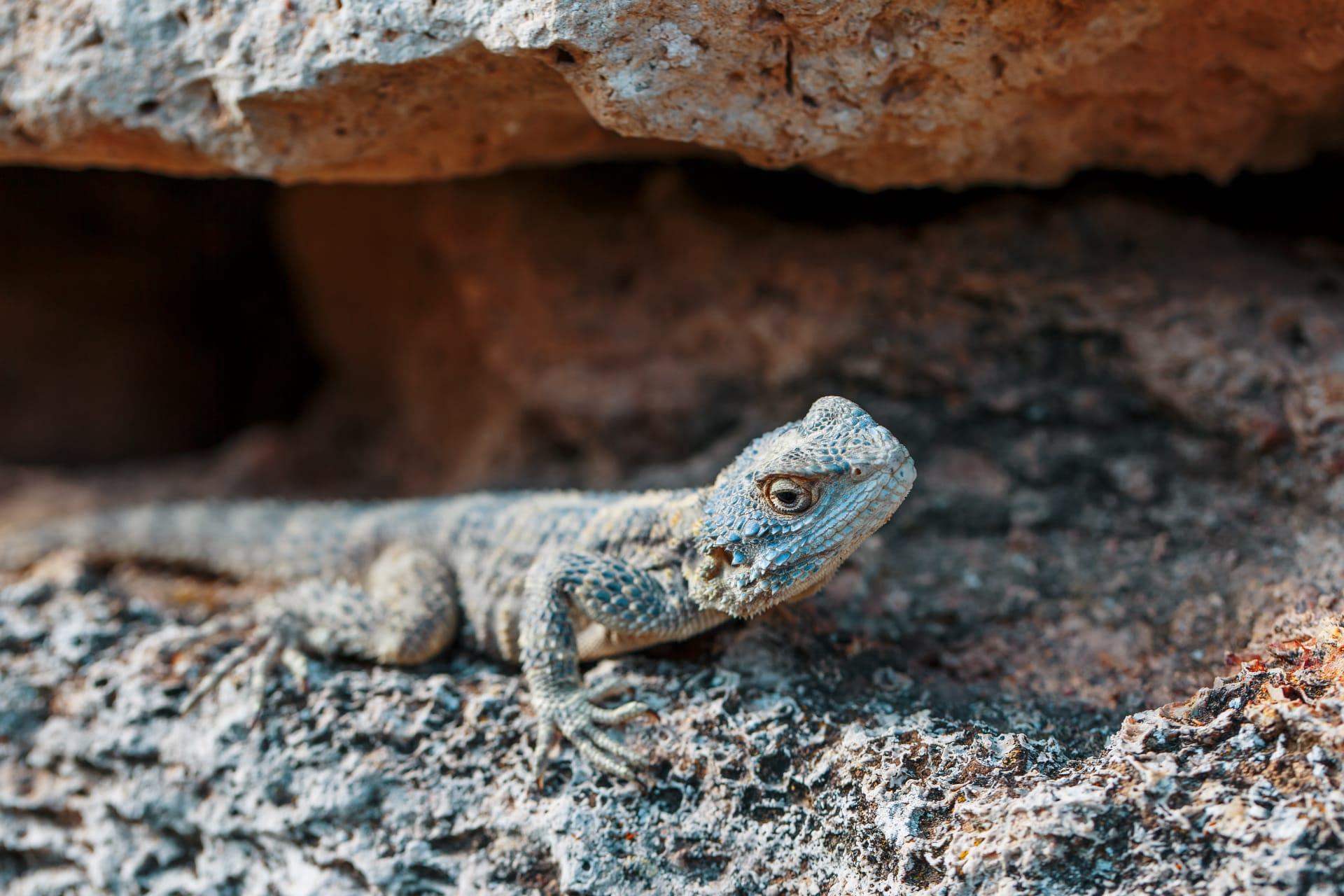African Spiny Tailed Lizard
- Home /
- Mini Encyclopedia /
- Animal /
- African Spiny Tailed Lizard
1
The African Spiny Tailed Lizard, known scientifically as Cordylus tropidosternum, belongs to the family Cordylidae, a group of lizards mainly found in sub-Saharan Africa. This species is characterized by a robust, spiny tail, which it uses as a defense mechanism against predators. The Cordylidae family is known for their unique adaptations and armored bodies, with the African Spiny Tailed Lizard being a prime example.
These lizards predominantly inhabit the eastern regions of Africa, with a range extending from Kenya and Tanzania to the northern parts of South Africa. Their preferred habitat includes rocky outcrops and savannas, where they can often be found basking in the sun on rocks. These areas provide both the warmth needed for their thermoregulation and the crevices needed for shelter and protection.

2
Question: Do African Spiny Tailed Lizards have the ability to regenerate their tails like some other lizard species?
Answer: Contrary to popular belief, African Spiny Tailed Lizards do not possess the ability to regenerate their tails. While many lizard species can autotomize their tails as a defense mechanism, allowing them to escape predators and regenerate the lost part later, this is not the case for the African Spiny Tailed Lizard. Instead, their primary defense strategy is using their strong, spiny tail to block the entrance to their hiding spots, protecting them from predators.

3
The African Spiny Tailed Lizard employs several survival strategies to thrive in its environment. One key tactic is their use of crevices and rock cracks for shelter. They are adept at wedging themselves into these tight spaces, using their spiny tails as a barrier against predators. This physical adaptation not only provides a means of protection but also aids in maintaining body temperature, as they can regulate their exposure to the sun and heat.
Additionally, these lizards are omnivorous, feeding on a variety of insects, plants, and small invertebrates. This dietary flexibility allows them to adapt to changing food availability in their arid habitats. Their ability to survive on limited water sources, primarily obtaining moisture from their food, is another crucial aspect of their survival in the often harsh African savanna.

4
In their ecosystem, African Spiny Tailed Lizards play a significant role as both predators and prey. As predators, they help control the populations of insects and other small invertebrates, contributing to the ecological balance. Their feeding habits can influence the distribution and abundance of the smaller species they prey on.
As prey, they are an important part of the food chain, supporting larger predators. Their presence in an ecosystem indicates a healthy balance, as they are sensitive to environmental changes. This makes them valuable indicators of ecological health in their habitats. Their interaction with both the biotic and abiotic elements of their environment underscores their integral role in the savanna ecosystem.

5
Film: "Reptiles of the Sahara" is a documentary produced in the United States in 2018. This film explores the diverse and fascinating world of reptiles in the Sahara Desert, including a segment on the African Spiny Tailed Lizard. It highlights their survival strategies, habitat, and the challenges they face in the desert ecosystem.
Book: "Lizards of Africa: Nature's Artful Survivors," published in the UK in 2020 by author David Blackburn, offers an in-depth look at various lizard species across Africa, including the African Spiny Tailed Lizard. The book delves into their biology, behavior, and the unique adaptations that allow them to thrive in diverse environments.
Book: "The Hidden Life of African Reptiles," published in Germany in 2021 by author Ingrid Bauer, focuses on the lesser-known aspects of African reptiles' lives, including a detailed chapter on the African Spiny Tailed Lizard. The book provides insights into their social behavior, mating rituals, and the impact of climate change on their habitats.